Reading Comprehension Text and Exercises
Types of Cookies and
Their Special Names
Cookies from Around the World
Cookies (or biscuits, as the Brits call them) are everyone's favorite snack. Usually made from the simple base of flour, sugar and oil, cookies are customized and made absolutely delicious by adding chocolate chips, nuts or raisins.
They can be found everywhere – prepacked at a local supermarket, homemade, in a local bakery, bought at a vending machine or brought in by someone at school or work. With such immense cookie diversity, it is hard to pick your favorite, and each country has its own special cookie tradition!
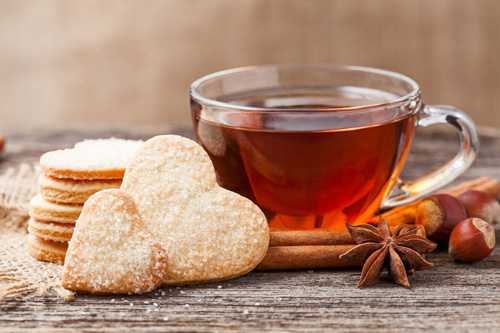
Click Here for Step-by-Step Rules, Stories and Exercises to Practice All English Tenses
A Brief History of Cookies
- It is believed that cookies originate from Persia. Once sugar became commonly used in the region in the 7th century, Persians found a way to mix it with other available ingredients and bake it.
- When the Muslim forces began their conquest of Spain in the 8th century, they also spread the idea of cookies. Some centuries later, cookies were a part of the regular diet in the whole of Europe among all levels of society – including kings and queens as well as peasants.
- Because of their delicious taste and caloric value, cookies became a travel companion of many people who began to explore other parts of the world. Made from nuts, sugar and water, a cookie called jumble was among the first ones to become known on every continent.
- The American word "cookie" derives from the Dutch language and their word "koekje", meaning "little cake". The Americans adopted it through the Dutch settlement of America in the 1600s.
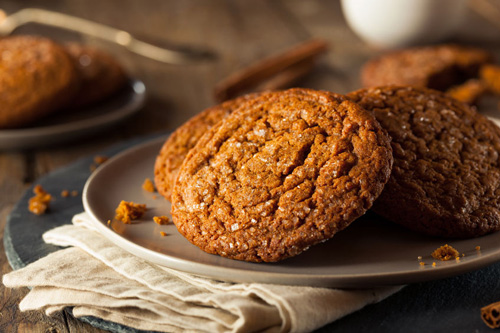
Some Famous Cookie Types
Alfajores (singular form: alfajor)
The alfajor cookie traveled across the world from the Middle East, with written records about it dating back to the 8th century.
From there, alfajores reached Spain and are now commonly found in many South American countries.
The word alfajor stems from the Arabic word al-hasú, which means filled or stuffed.
Traditional Spanish alfajores are made from two round cookies and dulce de leche (a milk-based sweet filling), but some more modern variations are coated in dark or white chocolate. These sandwich cookies are the most common snack for both schoolchildren and adults in Argentina, which is its largest consumer in the world.
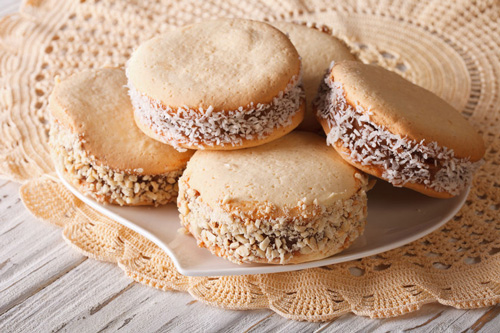
Biscotti
In Italy, the most popular cookies are biscotti – almond cookies originating from the Italian city of Prato.
In the local language, "biscotti" is the plural form of "biscotto", a word originating from "biscoctus", which in Latin means "twice baked".
Traditionally, biscotti are baked twice so they can be very dry and stored for a long period of time.
Because of this trait, biscotti were especially useful for travelers and soldiers. In fact, biscotti were a staple food of the Roman Legions, the largest unit of the great Roman army.
Also known as cantuccini, these dry cookies are often served as an after-dinner dessert with a drink – in Italy, they come with wine, whereas in other parts of the world coffee and tea are more common.
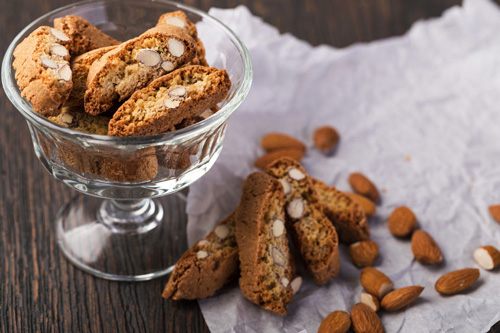
Chocolate Chip Cookies
The famous chocolate chip cookie is an American invention, made for the first time in 1938 by Ruth Graves Wakefield, an American chef who decided to add a chopped up chocolate bar into the standard cookie dough, hoping the chocolate would not melt so that the cookie could stay crunchy.
The cookie was originally named "Toll House", after the inn where she worked.
After she published a recipe book, this cookie became a favorite dessert in many American homes.
During World War II, many soldiers sent letters back home asking their families to ship them some Toll House cookies, which is really what made this cookie the national cookie of the United States.
Some popular variations include adding peanut butter, macadamia nuts or simply more melted chocolate.
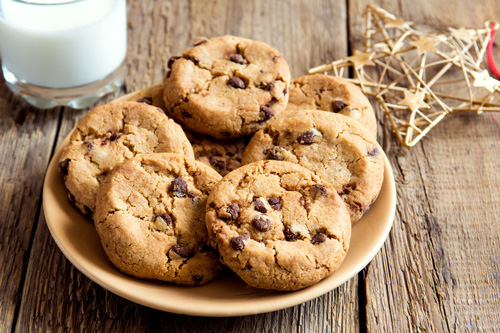
Hamantash
The hamantash (or hamantasche) cookie, traditionally made by Ashkenazi Jewish communities, has a long history.
It is associated with Purim, a Jewish holiday celebrated in Febuary or March to commemorate how the Jewish people were saved from a massacre planned by a Persian minister called Evil Haman.
That's why another name for this cookie is "Haman's ear". The cookie's triangular shape is supposed to represent the ears of Haman (oznei Haman in Hebrew), symbolizing triumph over this particular enemy.
This special shape of the cookie is reached when the sides of the circular dough are folded, and a filling, traditionally made of poppy seed, but also apricot or dates, is added to the center.
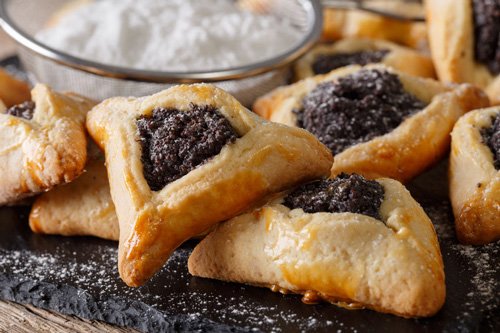
See Types of Cookies and Their Special Names, Cookies from Around the World, Part 2
Comprehension Exercises
Vocabulary Questions
- What does "dough" mean?
- thin layer of butter
- the ingredients essential for cookies
- thick mixture of flour and liquid
- What does "philologist" mean?
- person who loves cooking
- expert on cookies
- person who studies languages and literary texts
- What does "customize" mean?
- modify something to suit someone's needs
- make something available to everyone
- keep something a secret
- What does "vending machine" mean?
- machine that plays music at a bar
- machine that makes cookies
- machine that gives food and drinks when coins are inserted
- What does "trait" mean?
- major disadvantage
- distinguished quality or characteristic
- unique taste
Collocation Questions
- The chocolate chip cookie was created when a _________ chocolate bar was added to the dough.
- shredded
- chopped up
- cut up
- Cookies became a travel _________ of many European explorers.
- companion
- partner
- fellow
- During the Purim holiday, Jewish people celebrate the victory _________ their enemies.
- towards
- above
- over
- Argentina is the largest _________ of alfajores in the world.
- consumer
- eater
- shopper
- _________ cookies are sold in supermarkets.
- Prepacked
- Wrapped
- Foiled
- Many people's _________ diet includes cookies.
- fixed
- constant
- regular
- There are many _________ of the classic chocolate chip cookie.
- adaptations
- variations
- alternatives
- Cookies have a great caloric _________.
- value
- benefit
- worth
- Written _________ about the alfajores date back to the 8th century.
- dossiers
- files
- records
- Nowadays, alfajores are often _________ in dark chocolate.
- blanketed
- dressed
- coated
Wh Questions
- What is the most traditional filing for the hamantash cookie?
- chocolate
- poppy seed
- honey
- Which cookies were invented in the U.S.?
- chocolate chip cookies
- alfajores
- biscotti
- Where does the name 'alfajores' originally come from?
- from medieval Spanish
- from Latin
- from Arabic
- How did Americans adopt the word 'cookie'?
- through a Dutch settlement
- through their interactions with Native Americans
- by traveling to Scandinavia
- Why are biscotti baked twice?
- because that makes them last longer
- because that makes them softer
- because that gives them a special taste
Evaluating Statements
- Based on the information in this lesson, which statement is true?
- Hamantash cookies look like circles.
- Hamantash cookies look like triangles.
- Based on the information in this lesson, which statement is false?
- Argentine people eat more alfajores than any other nation in the world.
- Alfajores are not very popular in Argentina.
True or False?
- Based on the information in this lesson, is the following statement true or false?
"Once cookies spread across Europe, only royal families were able to eat them." - True
- False
- Based on the information in this lesson, is the following statement true or false?
"Outside Italy, biscotti are more frequently served with coffee and tea than with wine." - True
- False
Answer Key
1. C | 2. C | 3. A | 4. C | 5. B | 6. B | 7. A | 8. C | 9. A | 10. A | 11. C | 12. B | 13. A | 14. C | 15. C | 16. B | 17. A | 18. C | 19. A | 20. A |21. B | 22. B | 23. B | 24. A
Get Updates, Special Offers, and English Resources
Download your FREE GIFT (the first two chapters of
English Short Stories Book and Workbook)
as soon as you join!

By submitting your email, you consent to receiving updates and newsletters from us and to the sharing of your personal data with third parties for the purposes of sending you communications. We will not spam you. You can unsubscribe at any time. For more information, please see our privacy policy.





